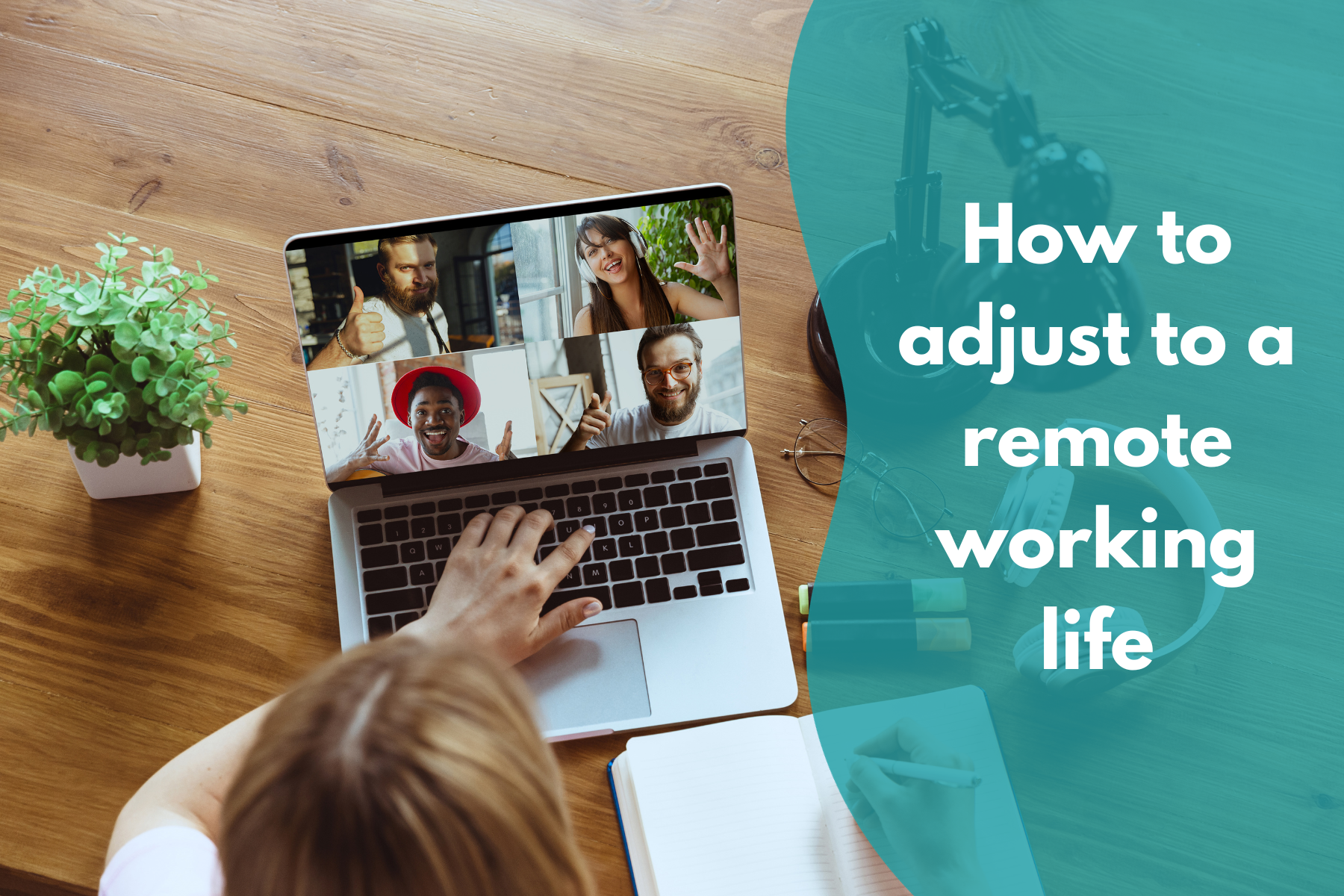It can be difficult going from working in a social environment and travelling to work every day, to working remotely from your own home. However, in the past couple of years working remotely has increased in several professions. I have experienced this first-hand going from working in a busy, in-person environment to working in a fully remote role at HubGem, however, I have found some best practices that have worked for me when making this adjustment.
Best practices for adjusting to remote working
Creating your own workspace
Creating your workspace is key to adjusting to working from home. It may be daunting at first getting into a routine at home and creating a space where you can feel productive and comfortable. However, creating a workspace that works for you is key. This workspace should maximise productivity and minimise distractions as it can be difficult at first to adapt to working from home without being distracted by your surroundings.
You should set up a space in an area where there are minimal distractions and where you feel comfortable working. This may be in a home office or even from the kitchen table. It is also key to work from a space that you can leave at the end of a working day so you separate your working space from your home life. It can be easy to merge your working space and home life, however you need to find a boundary between the two. Even if this means dedicating an area in your house as an office.
Once you have found a space to work, it is important that you feel productive and comfortable in this space. You can get creative here and create a workspace which has everything you need to keep you focused and efficient. It might be that you have a desk space and use a comfy chair as this can help you be comfortable and increase productivity. You may want to add some light to your space by locating your desk near a window or by adding artificial light, especially for the darker winter days. I personally like to customise my workspace with colourful pens, candles, a photo frame, and notebooks. This creates an enjoyable space I can come to every day to work from which enhances my working from home experience. Creating a comfortable, productive and personal space to work has really helped me adjust to working from home. It allows me to still have the social office feel but in the comfort of my own home.
Routine and time management
Once you have your space set up, it is important to establish routines and effectively manage your time. Creating a daily routine helps you stay focused. It can be difficult to stay focussed when you are working remotely as arguably there are more distractions in your own home than in an office environment. However, creating a routine such as taking regular breaks and having lunch at a specific time every day, will allow you to stay focused on your everyday tasks and reduce distractions. If you have specific working hours, it is great to get into the routine of sticking to these and planning your day within these hours, accounting for any breaks within your routine.
Establishing a routine goes hand in hand with time management. It is key when working from home and making this adjustment to create a routine which you can stick to and that makes it easy for you to manage your time. It might be that you create a clear defined to-do list every day when you start work to keep on top of your work and manage your time. Having a clear understanding of your tasks and priorities allows your working day to become manageable, especially when adjusting to working from home. It is also key to be realistic with what you can achieve each day in your working hours as you don't want to schedule too much work and feel overwhelmed or work outside your scheduled day just to fit tasks in. Therefore, creating a routine and planning out your days will allow you to feel productive, whilst also allowing yourself short breaks throughout the day.
Communication and well-being
As you transition from perhaps working in a social environment every day, to working remotely by yourself, it can be difficult to navigate communicating with your team and co-workers. However, this is key to working remotely as you need to maintain effective communication and collaboration. Most remote working teams have a communication channel they use and this is key to staying in touch with colleagues to update them on completed tasks and progress within projects, asking questions and offering help to other individuals where possible. It is also great to take a break from working and have a general chat with each other just like you would in a social working environment. Having this connection will not only help you keep connected to your team but will also boost your well-being as you won't feel isolated in your remote working space. At HubGem we use Slack to keep connected every day about both work and personal topics such as our weekend plans, exercise or even what we're having for dinner!
A key factor you need to focus on when adjusting to remote working is your well-being. Some activities can help you take care of your well-being when working remotely such as taking regular breaks and getting outside. You could do this on your lunch break for example and go for a walk to get outside and away from your workspace. Getting some fresh air will clear your mind and allow you to come back to work with a clear outlook on your day. Changing your environment will also benefit your well-being. Another great way to boost your well-being when working remotely is to incorporate movement into your day. Whether this is getting outside, or simply getting up and walking around. You could also look into having a standing desk which will allow you to continue working but standing up. It's great to keep being sociable at work too, even though you are part of a remote team. This may include having monthly social calls on Zoom at work so your team takes an hour away from working and gives you a chance to socialise and connect. We do this at HubGem and it is a great way to connect with your team whilst working remotely. It allows us to get to know one another better too, especially when new members join the team.
These are just some suggestions to help you adjust to working remotely. It may seem daunting at first, but these best practices can help you create a productive and comfortable workspace, stay focused on your tasks every day, and ensure you are keeping in contact regularly with your team and staying active physically and mentally.
Similar blog articles:
➡️ What HubGem do to promote wellbeing
.png?width=150&height=101&name=HUBGEM%20Logo%20-%20smaller%20logo%20(1000%20x%20673).png)


.png)

%20-%20AEO.png)

%20-%20BreezeContent%20agentstudio.png)